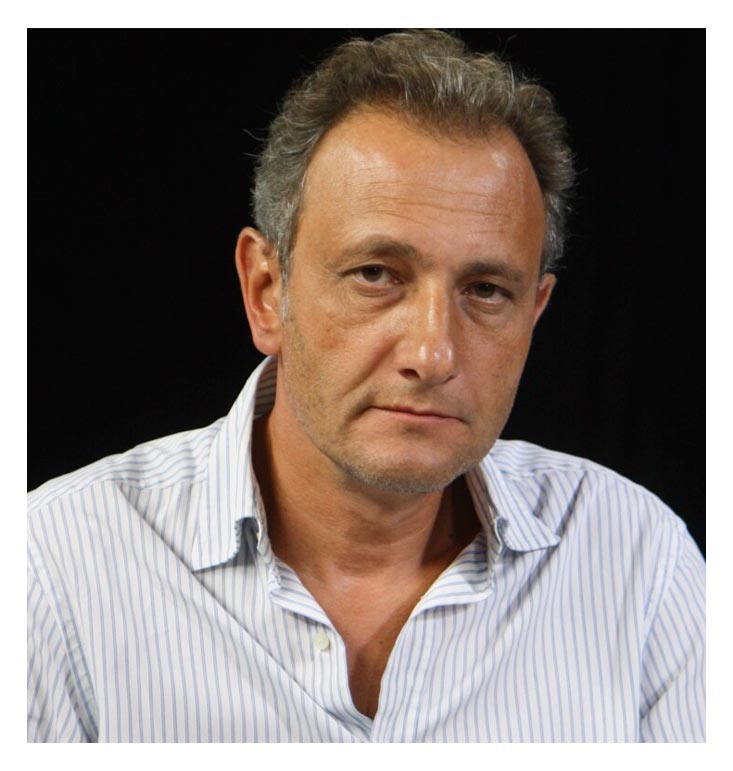 Every nation has its skeletons in the closet. But they are kept as neatly as possible and do not show their noses outside. But our skeletons are the fattest, largest, and most glossy. They grow flesh and blood. They are restored with taxpayers' money, like the Mausoleum of Ilyich - perhaps the mummy will also get some people's money. At someone's expense, by an unknown decision, a plaster "wonderful Georgian" was erected at the Taganskaya metro station, as if mocking yesterday's and today's victims of brutal regimes. He, however, looks more like an elegant artist from the Sukhishvili ensemble than a pockmarked freak with a withered hand - about to start dancing. However, Stalin also loved to dance and made others do so... And when you exit the Taganskaya station, you find yourself on Solzhenitsyn Street, formerly Bolshaya Kommunisticheskaya. Moscow's toponymy is sinister: it was in the Taganskaya prison that the NKVD officers independently of the Nazi executioners invented the gas van, where victims were killed with exhaust gases.
Every nation has its skeletons in the closet. But they are kept as neatly as possible and do not show their noses outside. But our skeletons are the fattest, largest, and most glossy. They grow flesh and blood. They are restored with taxpayers' money, like the Mausoleum of Ilyich - perhaps the mummy will also get some people's money. At someone's expense, by an unknown decision, a plaster "wonderful Georgian" was erected at the Taganskaya metro station, as if mocking yesterday's and today's victims of brutal regimes. He, however, looks more like an elegant artist from the Sukhishvili ensemble than a pockmarked freak with a withered hand - about to start dancing. However, Stalin also loved to dance and made others do so... And when you exit the Taganskaya station, you find yourself on Solzhenitsyn Street, formerly Bolshaya Kommunisticheskaya. Moscow's toponymy is sinister: it was in the Taganskaya prison that the NKVD officers independently of the Nazi executioners invented the gas van, where victims were killed with exhaust gases.
The hose of transmitting national historical memory got tangled in itself and stopped its supply to brains and souls. Only the false official version of history remains.
Moreover, this version is turned upside down with a change of poles. While the astonished public exchanged opinions about the Taganskaya bas-relief, which - characteristically! - had to be guarded, in the city of Taganrog, the plaque on the former NKVD building was changed. As if they changed the plaque on the door of the Russian political regime.
Previously, it read:
«...In this building from 1928 to 1941, the NKVD department was located, in the dungeons of which unjustly repressed people languished...»
Now, instead of this reminder, the following dazibao hangs, much more verbose (repressive regimes are generally characterized by verbosity and wordiness):
«...In this building from 1929 to 1941, the city department of the OGPU/NKVD was located, whose employees made a significant contribution to the liberation of the city of Taganrog from the Nazi occupation during the Great Patriotic War...»
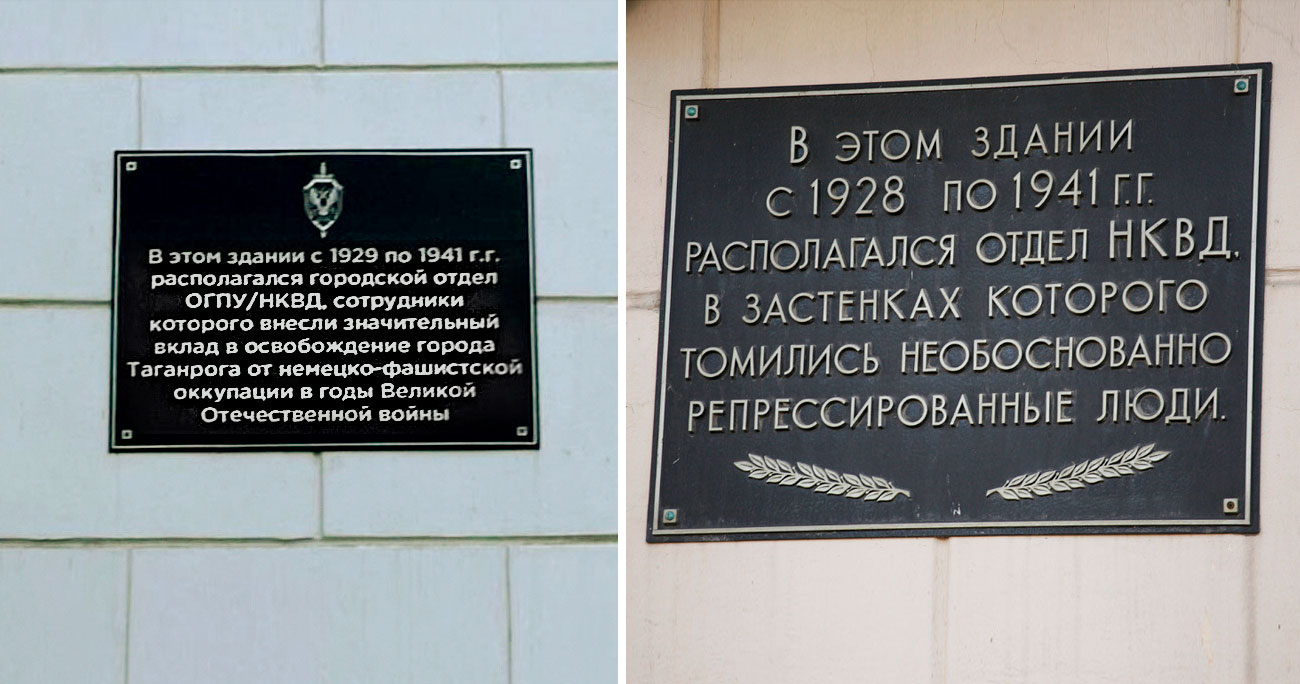
Taganrog, the building of the former NKVD. Photo source: Telegram channel "Tyutina"
In essence, this is all you need to know about the Putin regime, changing signs. There were no "unjustly repressed", just as there are none now. The civil war is being waged not only with today's dissenters but also simultaneously with yesterday's. Such plaques repress memory, re-repressing people who have long been tormented. There is a battle with the dead simultaneously with a war with the living. Both are enemies. There is no longer any difference between the enemies of Stalin and the enemies of Putin.
In the year of Putin's term reset, 2020, five years ago, in a symbolic way, memorial plaques in memory of the tortured and killed citizens of the USSR and Poland were removed from the building of the Tver State Medical University in accordance with the decisions of the prosecutor's office. It was from here that corpses were taken to be buried in Mednoye, and this is part of the Katyn tragedy, which has now become the subject, to put it delicately, of speculation. It was here that the famous executioner Vasily Blokhin, in March-May 1940, dressed in a leather apron, cap, and leggings with a flare, so as not to be splattered with blood, personally killed victims. And then he went to the salon car at the station - to drink and snack.
Then the plaques were simply unscrewed, as now the "Last Address" plaques are being uprooted. And now more - they are replaced by others: instead of memorial signs to the victims - memorial signs to the executioners. Isn't this a coming out of the current political regime?
Why not, in this logic, hang a plaque in memory of Blokhin on the building of the same Tver institution - saying, here Blokhin V.M., fulfilling a responsible task of the party and government, heroically destroyed thousands of "people of the former bourgeois Poland" in 1940? Blokhin is buried in the most prestigious - next to the entrance - place at the Donskoy Cemetery. By place of work: here the bodies of the killed repressed were burned. Blokhin's grave is well-maintained.
Praising Stalin is part of the new ethics. Morally encouraged behavior. At the same time, Putin did not say a word and did not give anyone instructions. Stalin is honored, brought out independently and preventively, within the framework of self-censorship and, most terribly, in connection with the 80th anniversary of Victory. The celebrations suddenly turned into self-Stalinism. Stalin grows from the grave, from the Kremlin wall, from all cracks like an unyielding weed.
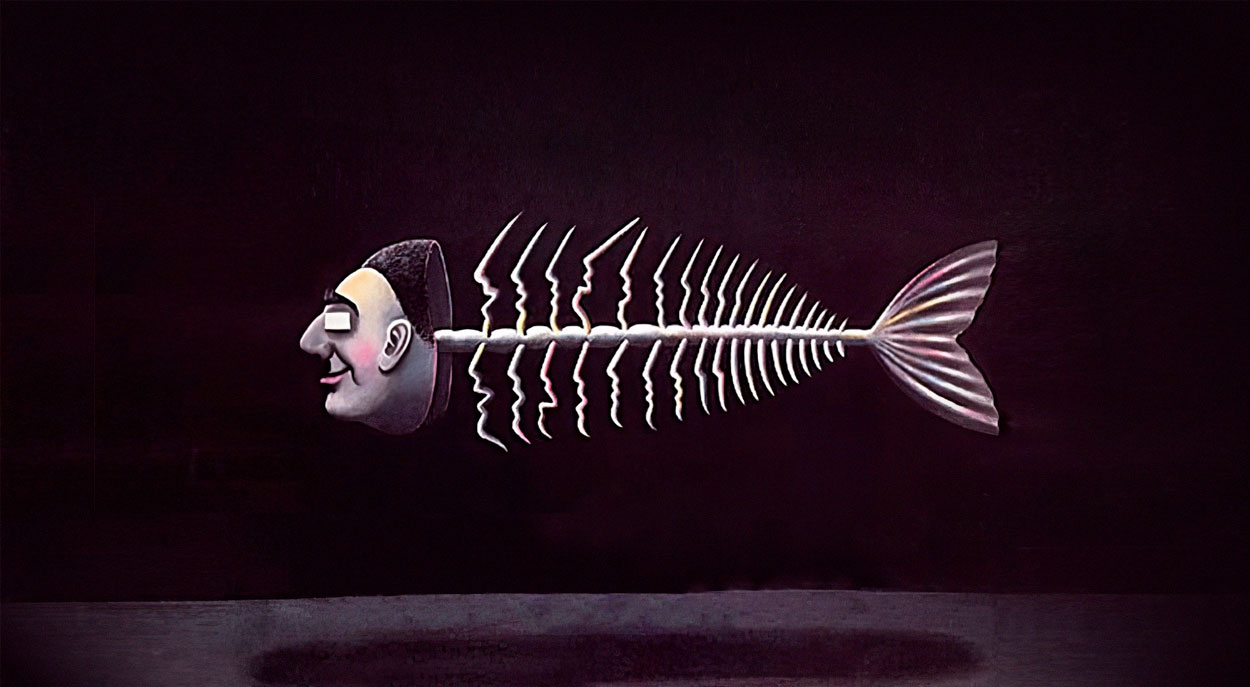
Poster for the film "Repentance" by director Tengiz Abuladze
In the famous and forgotten "Repentance" by Tengiz Abuladze, the heroine of the film, whose family suffered from repression, digs up the corpse of the ghoul Varlam Aravidze from the grave every night - the murderer should not lie peacefully in the ground like ordinary people. How many more times do you need to pull the tyrant's corpse out of the grave, emitting poisonous radiation, for people to understand that this is a tyrant and murderer, a majestic curtain for justifying today's autocracy. That this should not happen again in any form.
But today it is impossible: over the grave of Varlam Aravidze in our days, a majestic monument would be erected. Millions of repressed, today's millions of dissenters, silent or protesting aloud, have lost. And yet once the same millions watched "Repentance", everyone remembered the "road to the temple". And Abuladze's film - here's the irony of history! - competed with Nikita Mikhalkov's film "Dark Eyes" at the Cannes Film Festival in 1987. "Repentance" - Grand Prix, "Dark Eyes" - prize for best male role (awarded to Marcello Mastroianni).
Stalin does not unite the nation. He divides it. Which became evident after the provocative step - the installation of the bas-relief at "Taganskaya". What were those who came up with this counting on - here, eat, destructive liberals! Take it! They got it. They were horrified - serves you right.
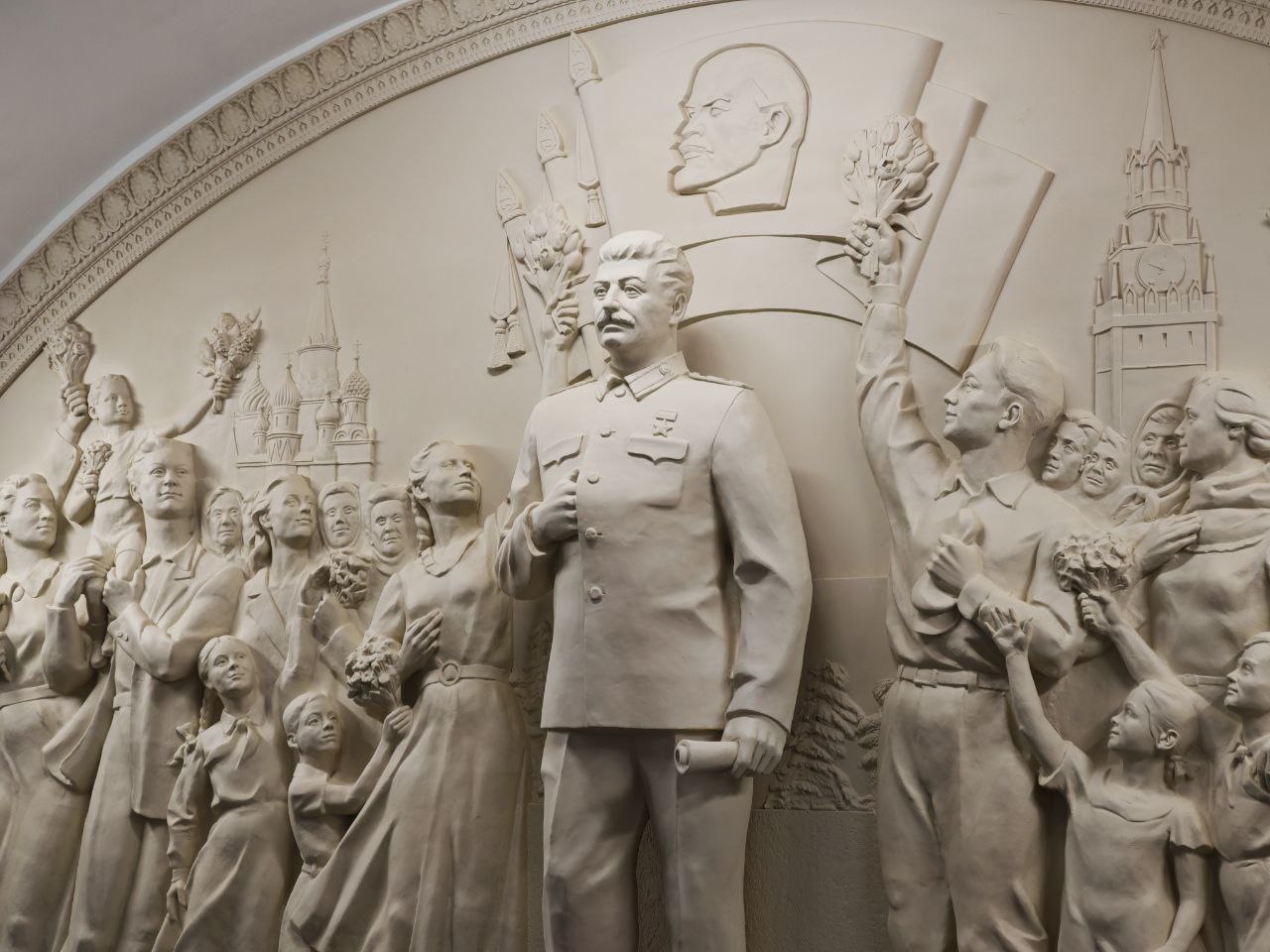
Restored bas-relief of Stalin. Taganskaya station, Moscow. Photo: "IA Krasnaya Vesna"
But the most frightening thing is that Stalin becomes part of the "new normality". Each step down the path of savagery and archaization has been considered a "new normality" for years, a routine described in terms of "what's-so-bad-about-it-different-opinions-exist". How many more "new normalities" must pass for someone to be enlightened en masse: "But this is abnormal!" It is abnormal to live abnormally, it is abnormal when they rule, sitting on bayonets and carrying out repressions. It is abnormal when people die. When the old generation of politicians tells the young generation of the nation how to live and how and for what to die.
"This is Varlam Street. It does not lead to the temple". But now temples are also erected in honor of numerous Varlams.
Putinism is plagiarism of Stalinism. But the fact that this historical trick could fall under the "Antiplagiarism" system does not make it easier. Because it's not just about the personality of the idol and his cult. It's about us, in our, according to Okudzhava, "let's invent a despot".
And maybe try to live without him. There was a time, albeit historically short, when it worked. But for this, you need to go through attempts to think. To understand: "he" is "we", and therefore, we bear responsibility, which is not at all pleasant to admit. From here, it's one step to repentance, which cannot be mass. Again a closed space, again we will enter another similar circle of history in the next generations?
It didn't work out completely in the 1960s, it didn't even work out in the unique historical time - during perestroika. It didn't work out in the 1990s - it seemed everything was already clear. It turns out, not everything. Stalinization necessarily accompanies any maturation of an authoritarian regime. And when it reaches its peak, Stalinism, resurrected from hell, breaks through to the very top. And why should it work out when the time comes for a new de-Stalinization?
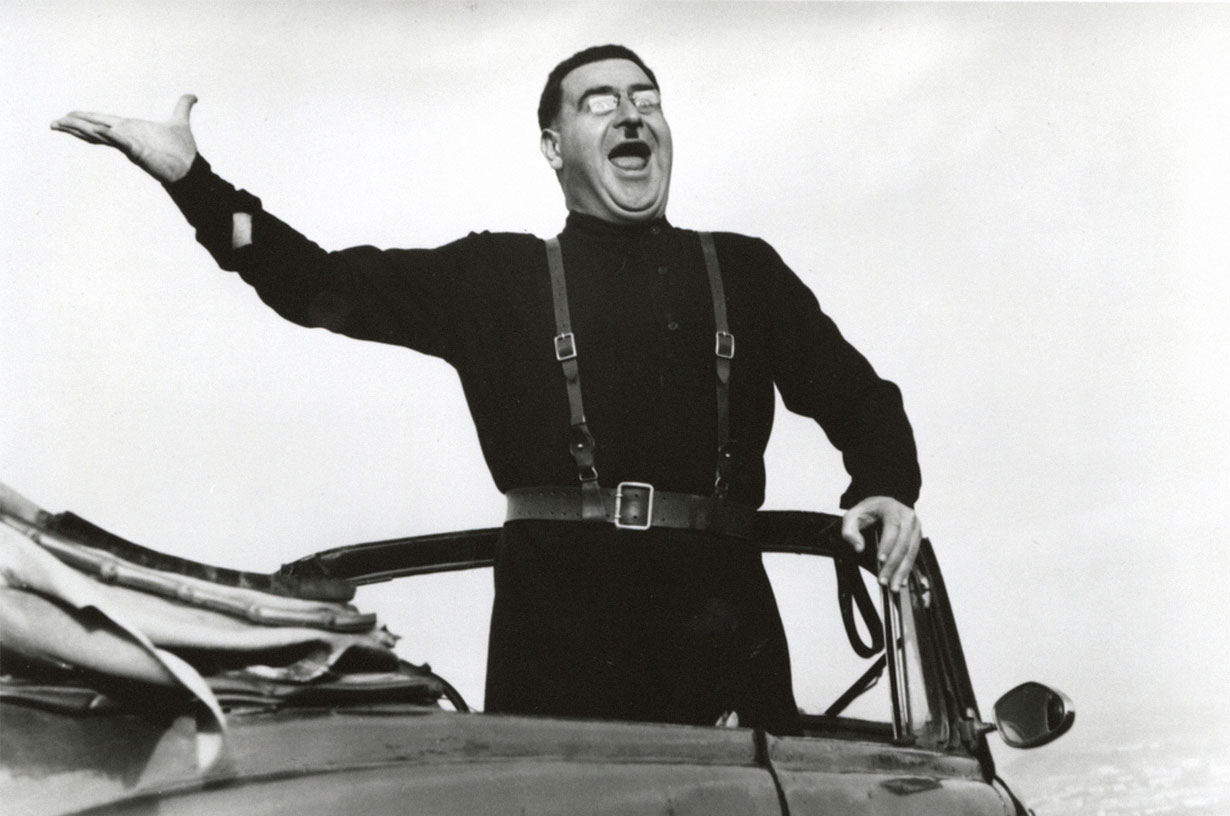
Varlam Aravidze - character from the film "Repentance". Frame from the film by Tengiz Abuladze
The nation has not gone through that very repentance, no matter how pompous it sounds. It's not about pomp. Varlam Aravidze won. The monument with a mustache and pince-nez obscures the mind. It frightens. It restrains. It sets the norm.
As the insightful Lev Anninsky wrote during perestroika, "it's not the dictatorship that's deadly - it's its soil". And it is richly fertilized.
And yet, someday we will have to go the opposite way, not hesitating to change plaques. It will be a great dismantling of "cast in granite" tyrants after a disastrous reconciliation with a long series of "new normalities".
For now, it's a civil war. Including with memorial plaques. Even if more often ours are cardboard. The main thing today is not to lose memory.
*Andrey Kolesnikov is considered a "foreign agent" by the Ministry of Justice of the Russian Federation.